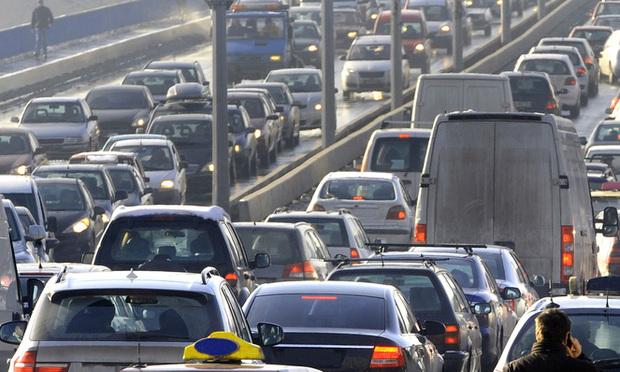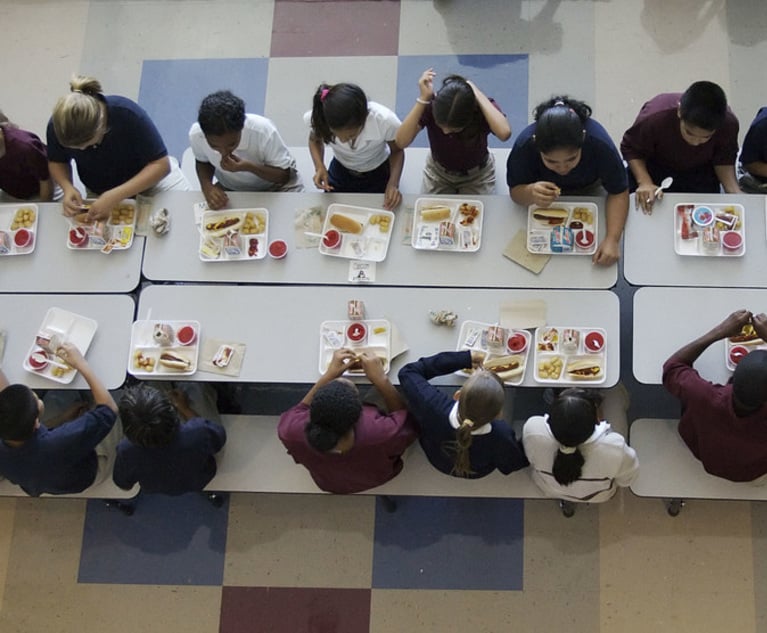Time For Some Traffic Problems
Town-by-town exclusion of rush hour traffic is a recipe for chaos. New Jersey parochialism will lead every town to shield itself by pushing unwanted commuters onto its neighbors.
February 05, 2018 at 11:00 AM
3 minute read

We've all had the experience of being stuck in traffic. Now it's possible for drivers to do something about it. Crowd sourced apps like Waze, Google Maps and Apple Maps provide instantaneous, firsthand information about clear roads that bypass the jam. Drivers can now get around everyday congestion at places like the George Washington Bridge approaches by leaving the highway and taking surface roads through the surrounding towns. As a result, residential communities find their streets as traffic clogged as the through roads.
Historically, towns have deterred unwanted commuter traffic by intense speed law enforcement on secondary roads during rush hour. But that doesn't work when congestion brings cars to a near standstill. One town, Leonia, thinks it has a solution. Since Jan. 22, it has limited the use of local roads during rush hour to tag-bearing cars of residents and people who work in the borough.
It is by no means clear that local home rule control over public roads extends that far. Municipalities may accept streets “dedicated to public use” (N.J.S.A. 40:67-1(b)), and they may close streets to “motor vehicle traffic” during specified times when they find that “the public safety, health or welfare” requires it (N.J.S.A. 40:67-16.9). N.J.S.A. 39:4-197(1)(b) delegates to municipalities the authority to enact ordinances “limiting the use of streets to certain classes of vehicles.” It is at best questionable whether “the public” is limited to those who live and work in town, or whether the power to classify vehicles allows discrimination against non-residents. It is especially questionable when the streets, as in Leonia's case, form part of the approaches to a major interstate thoroughfare, and the ordinance affects the flow of interstate commerce.
Town-by-town exclusion of rush hour traffic is a recipe for chaos. The total volume of traffic is not about to diminish. If one town pushes it out, drivers will clog the somewhat less convenient surface roads of neighboring towns as the navigation apps show them the way around both highway jams and legal barriers. New Jersey parochialism will lead every town to shield itself by pushing unwanted commuters onto its neighbors.
This new problem can only be solved rationally on a regional basis. N.J.S.A. 39:4-8 requires that municipal ordinances regulating traffic must be approved by the commissioner of transportation, except in those categories authorized by statute, and notice must be given to other municipalities affected by a proposed ordinance. We urge the incoming commissioner of transportation to promptly review the issue and determine whether Leonia's proposed action is authorized by law, to exercise the full scope of his review power under N.J.S.A. 39:4-8, and to request from the Legislature whatever additional authority is required to impose a regional solution that effectively balances traffic flow against the local interest in preventing congestion.
This content has been archived. It is available through our partners, LexisNexis® and Bloomberg Law.
To view this content, please continue to their sites.
Not a Lexis Subscriber?
Subscribe Now
Not a Bloomberg Law Subscriber?
Subscribe Now
NOT FOR REPRINT
© 2025 ALM Global, LLC, All Rights Reserved. Request academic re-use from www.copyright.com. All other uses, submit a request to [email protected]. For more information visit Asset & Logo Licensing.
You Might Like
View All
As Trafficking, Hate Crimes Rise in NJ, State's Federal Delegation Must Weigh in On New UN Proposal
4 minute read
Appellate Court's Decision on Public Employee Pension Eligibility Helps the Judiciary
5 minute read
Where CFPB Enforcement Stops Short on Curbing School Lunch Fees, Class Action Complaint Steps Up
5 minute read
'Confusion Where Previously There Was Clarity': NJ Supreme Court Should Void Referral Fee Ethics Opinion
4 minute readTrending Stories
- 1Who Are the Judges Assigned to Challenges to Trump’s Birthright Citizenship Order?
- 2Litigators of the Week: A Directed Verdict Win for Cisco in a West Texas Patent Case
- 3Litigator of the Week Runners-Up and Shout-Outs
- 4Womble Bond Becomes First Firm in UK to Roll Out AI Tool Firmwide
- 5Will a Market Dominated by Small- to Mid-Cap Deals Give Rise to a Dark Horse US Firm in China?
Who Got The Work
J. Brugh Lower of Gibbons has entered an appearance for industrial equipment supplier Devco Corporation in a pending trademark infringement lawsuit. The suit, accusing the defendant of selling knock-off Graco products, was filed Dec. 18 in New Jersey District Court by Rivkin Radler on behalf of Graco Inc. and Graco Minnesota. The case, assigned to U.S. District Judge Zahid N. Quraishi, is 3:24-cv-11294, Graco Inc. et al v. Devco Corporation.
Who Got The Work
Rebecca Maller-Stein and Kent A. Yalowitz of Arnold & Porter Kaye Scholer have entered their appearances for Hanaco Venture Capital and its executives, Lior Prosor and David Frankel, in a pending securities lawsuit. The action, filed on Dec. 24 in New York Southern District Court by Zell, Aron & Co. on behalf of Goldeneye Advisors, accuses the defendants of negligently and fraudulently managing the plaintiff's $1 million investment. The case, assigned to U.S. District Judge Vernon S. Broderick, is 1:24-cv-09918, Goldeneye Advisors, LLC v. Hanaco Venture Capital, Ltd. et al.
Who Got The Work
Attorneys from A&O Shearman has stepped in as defense counsel for Toronto-Dominion Bank and other defendants in a pending securities class action. The suit, filed Dec. 11 in New York Southern District Court by Bleichmar Fonti & Auld, accuses the defendants of concealing the bank's 'pervasive' deficiencies in regards to its compliance with the Bank Secrecy Act and the quality of its anti-money laundering controls. The case, assigned to U.S. District Judge Arun Subramanian, is 1:24-cv-09445, Gonzalez v. The Toronto-Dominion Bank et al.
Who Got The Work
Crown Castle International, a Pennsylvania company providing shared communications infrastructure, has turned to Luke D. Wolf of Gordon Rees Scully Mansukhani to fend off a pending breach-of-contract lawsuit. The court action, filed Nov. 25 in Michigan Eastern District Court by Hooper Hathaway PC on behalf of The Town Residences LLC, accuses Crown Castle of failing to transfer approximately $30,000 in utility payments from T-Mobile in breach of a roof-top lease and assignment agreement. The case, assigned to U.S. District Judge Susan K. Declercq, is 2:24-cv-13131, The Town Residences LLC v. T-Mobile US, Inc. et al.
Who Got The Work
Wilfred P. Coronato and Daniel M. Schwartz of McCarter & English have stepped in as defense counsel to Electrolux Home Products Inc. in a pending product liability lawsuit. The court action, filed Nov. 26 in New York Eastern District Court by Poulos Lopiccolo PC and Nagel Rice LLP on behalf of David Stern, alleges that the defendant's refrigerators’ drawers and shelving repeatedly break and fall apart within months after purchase. The case, assigned to U.S. District Judge Joan M. Azrack, is 2:24-cv-08204, Stern v. Electrolux Home Products, Inc.
Featured Firms
Law Offices of Gary Martin Hays & Associates, P.C.
(470) 294-1674
Law Offices of Mark E. Salomone
(857) 444-6468
Smith & Hassler
(713) 739-1250






